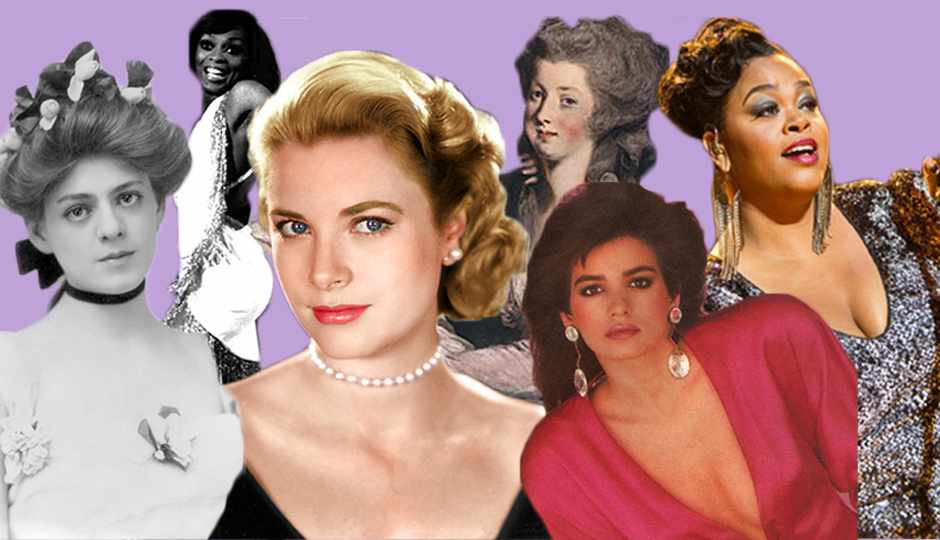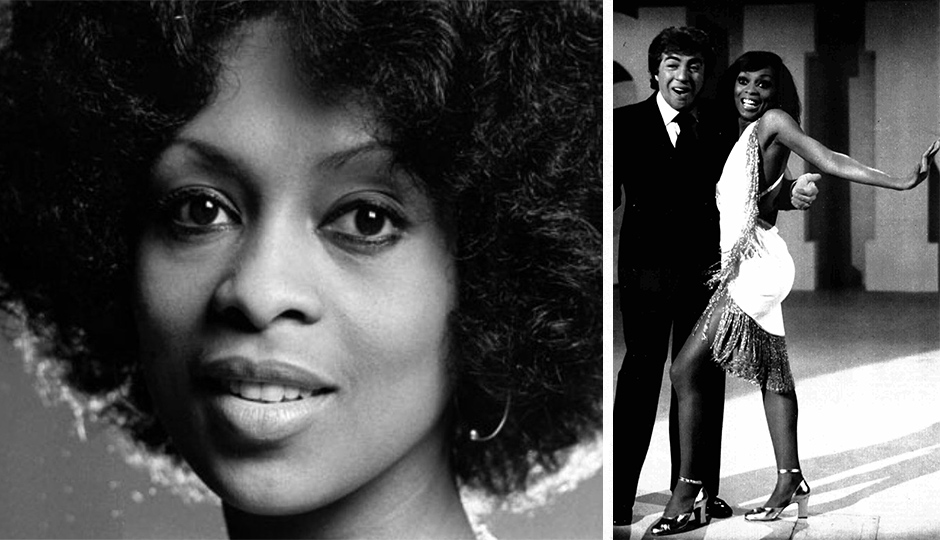8 Most Beautiful Women in Philadelphia History
Today would have been the 86th birthday of the remarkably beautiful Princess Grace of Monaco, born, of course, Grace Kelly, right here in our town. Philly may not be Paris or New York City, but by gum, it’s done all right by itself in the looks department. South Philly in particular has been a hotbed of hotness, producing several world-class beauties. Here, from Colonial times to the Roaring ’20s to the decadent ’70s to now, are some of the loveliest women ever to call this city home.
Peggy Shippen, 1760-1804
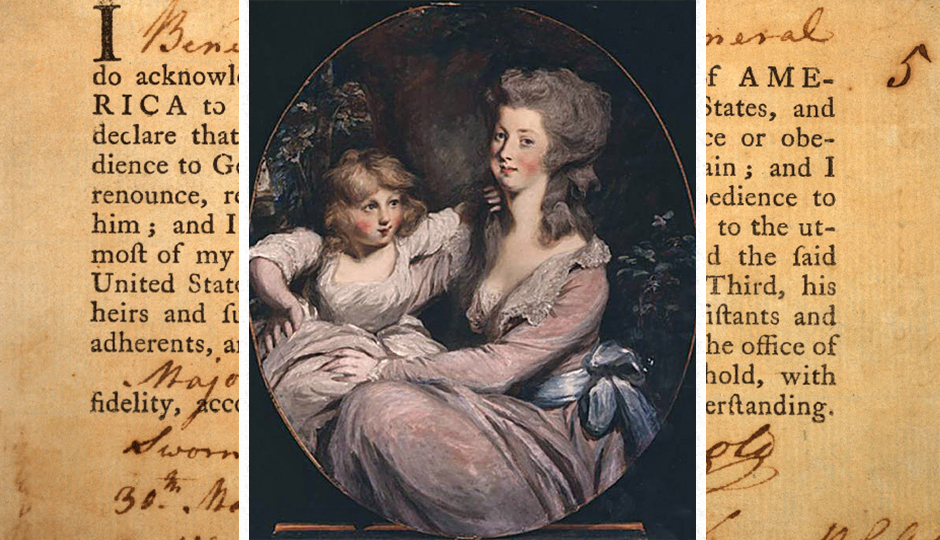
Peggy and her daughter Sophia, 1783. | Wiki Commons.
Margaret “Peggy” Shippen came from a family that boasted two mayors of Philadelphia as well as the founder of the borough of Shippensburg. Peggy married General Benedict Arnold (newly appointed military governor of Philadelphia) in 1779—she was 18; he was 37—and he embarked on a series of business deals that eventually resulted in a court martial for corruption. He resigned his command in great bitterness in 1780. Peggy, meantime, had been corresponding with a former suitor, Major John Andre, who had become a spy for the British. Arnold also began to spy for the British, with Peggy passing letters in code and secret ink for him. Arnold eventually became commander of the vital West Point defense post in New York and offered to sell it to the British for 20,000 pounds. In the intrigue that ensued, Peggy managed to deflect American troops that were searching for her husband by feigning hysteria, and Andre was hanged as a spy. Eventually the Arnolds and their children moved to England, where they were received and honored by the king and queen. They then moved to Canada, then back to England after a mob attacked their farm. Arnold died at age 60, reviled as a traitor and spy, leaving Peggy deeply in debt and disgraced; she only survived three more years, dying in 1804.
Ethel Barrymore, 1879-1959
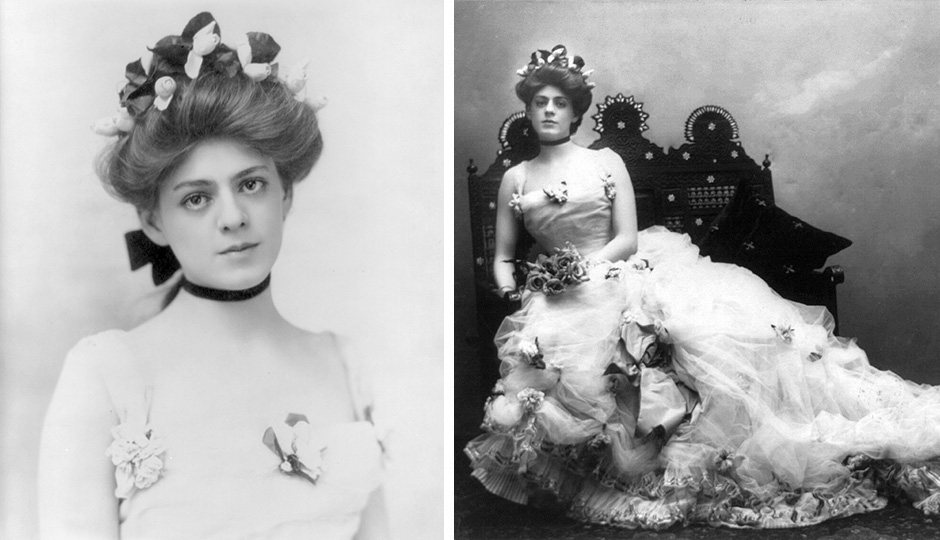
Ethel, 1901. | Wiki Commons / Flickr.
Born into the American equivalent of royalty—her father was matinee heartthrob Maurice Barrymore, and her mother, Georgiana Drew, came from a famed British theater family—Ethel May Blythe started her stage career at age 14 after dropping out of the Convent of the Sacred Heart school in Philadelphia. Against her father’s wishes, she moved to New York and debuted on Broadway in 1894 in The Rivals, then achieved stardom in 1901 in Captain Jinks of the Horse Marines. Schoolgirls worshiped her and copied her mannerisms, appearance and voice; she was rumored to be engaged a dozen times to such celebrities as Indian cricket player Prince Ranjitsinihi, and a young Winston Churchill asked to marry her. (Though she turned him down, they remained lifelong friends.) She eventually married (and divorced) the grandnephew of Samuel Colt, founder of the Colt firearms company. She appeared in dozens of silent films and talkies, and snagged a Best Supporting Actress Academy Award for 1944’s None But the Lonely Heart, with Cary Grant. She also starred in a short-lived TV sitcom as well as other television shows, though Broadway was her first love and the scene of her greatest triumphs; her New York Times obituary declared her the “holder of the stage’s brightest scepter.”
Helen Hope Montgomery Scott, 1905-1995
The mistress of Ardrossan, her family’s famed Main Line estate, Scott was anointed the “unofficial queen of Philadelphia’s Wasp oligarchy” by Vanity Fair. The model for Tracy Lord, Katharine Hepburn’s character in The Philadelphia Story (and, later, the lead in the musical High Society, starring Frank Sinatra and Grace Kelly), Scott, daughter of one of the founders of Janney Montgomery Scott, was proposed to by four men on the night in 1922 when she made her debut. Eventually she married banker Edgar Scott in what Philadelphians called “the wedding of the year,” then threw lavish parties attended by Hollywood royalty and titans of business and government. Madcap Hope once seated her dog at a formal dinner party, convinced Edward VII to stand on his head (so she could see what was beneath his kilt), regularly made the New York Couture Group’s annual Best Dressed list, inspired artists including Cecil Beaton and Augustus John, and danced the Charleston with Josephine Baker (in Paris) and the fox trot with the Duke of Windsor (in Morocco). She was active in equestrian and philanthropic circles up until her death in 1995 at age 90.
Grace Kelly, 1929-1982

Grace Kelly in Rear Window. | Flickr / Wiki Commons.
Her fairy-tale story convinced millions of American girls that they, too, could grow up to be princesses. The daughter of a Philadelphia bricklayer and crew star who’d been barred from competing at England’s Henley Regatta because he’d performed manual labor, Grace grew up in East Falls before moving to New York City at age 20 to become an actress. She put up at the Barbizon Hotel for Women, worked as a model, and debuted on Broadway in August Strindberg’s The Father. Her work attracted the attention of Gary Cooper, who starred with her in 1952 in High Noon, her first film. (Director John Ford opined that she had “breeding, quality and class.”) She also attracted the attention of Alfred Hitchcock, who began to cast her in his films, beginning with Dial M for Murder. Kelly beat out Judy Garland’s comeback performance in A Star Is Born to win the Best Actress Oscar in 1954 for The Country Girl. The following year she headed the U.S. delegation to the film festival at Cannes, where she encountered Prince Rainier of Monaco. He came to Philly to meet her family, then proposed three days later; their “Wedding of the Century” took place in 1956. She never made another film, devoting herself to raising her three children and philanthropy. She died at the age of 52 following an auto accident in Monaco, but her legend lives on.
Lola Falana, 1942-
The daughter of a Cuban immigrant father and an African-American mother, Falana left Germantown High shortly before graduation to move to New York City and find work as a dancer. There, she was discovered by Sammy Davis Jr., who featured her in his Broadway revue Golden Boy and then the film A Man Called Adam. She went to Italy to star in spaghetti Westerns and became known in Europe as “the Black Venus.” In 1968, Davis’s then-wife, May Britt, divorced him after he confessed to an affair with Falana; in 1969, Falana broke off their relationship, saying she didn’t want to always be known as “the little dancer with Sammy Davis Jr.” She went on to pose for Playboy, modeled for the Fabergé cosmetics line, made “blaxploitation” films, and appeared frequently on TV, including on Bill Cosby’s variety show (they’d met while he was in college and she was a young teen dancing in Philly nightclubs), The Joey Bishop Show, The Tonight Show and Laugh-In. In the 1970s she became known as the Queen of Las Vegas, singing and dancing (her signature song was, of course, “Whatever Lola Wants, Lola Gets”) at casinos and earning $100,000 a week. In 1987 she experienced a return of symptoms of multiple sclerosis and became partially paralyzed and blind; after a year and a half of mostly praying, she said, her symptoms subsided, and she returned to performing in Vegas. She converted to Roman Catholicism and founded the Lambs of God Ministry.
Wilhelmenia Wiggins Fernandez, 1949-
Born in (of course) South Philadelphia, Fernandez was raised by her garment-worker mother, the organist at Tasker Street Baptist Church. After high school, Fernandez went to work as a secretary at an insurance firm, but quit after two years to pursue a singing career. She applied to Juilliard, but was warned before her audition that if she was accepted, she’d have to wait a year before enrolling. She knew no opera arias, and so sang “Oh Divine Redeemer” at the audition. She was accepted immediately. She continued working as a typist to put herself through Juilliard, met and married a postal worker, had a child—and never gave up on her dream of singing. In 1976, she won a place in the chorus of the Houston Grand Opera’s performance of Porgy and Bess. Her marriage failed, but her career took off; she made her Parisian debut as Musetta with Placido Domingo in La bohème. Movie director Jean-Jacques Beiniex saw her perform in Paris and cast her in his first feature film, 1981’s Diva—the story of a young man obsessed with a black American opera singer. The film caused a sensation in Europe. Since then, Fernandez has sung the world over; she won the 1992 Laurence Olivier Theatre Award for best actress in a musical for her performance in Carmen Jones.
Gia Marie Carangi, 1960-1986
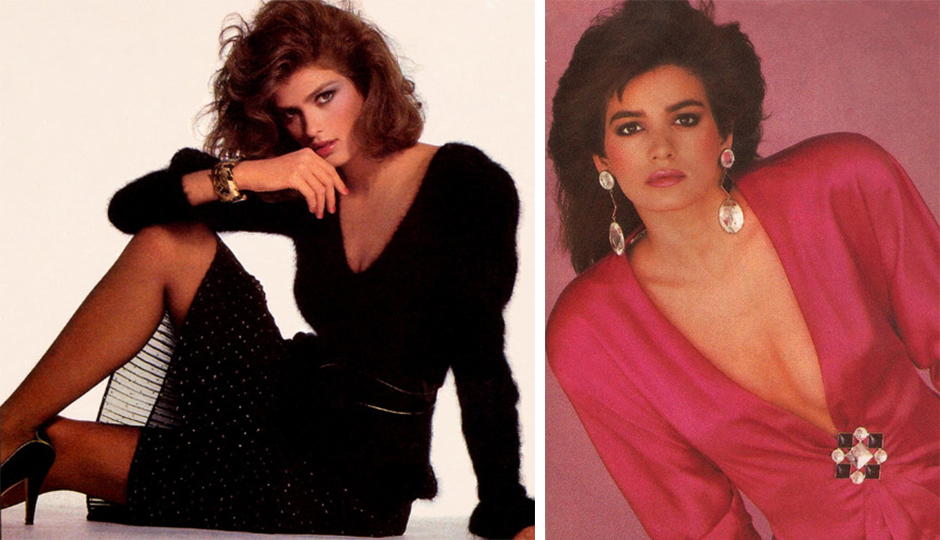
Gia in Cosmopolitan, September 1983. | Flickr.
The world’s first supermodel, South Philly native Gia Carangi, known professionally by her first name, burst onto the New York fashion scene when she was just 17, signing with Wilhelmina Models and becoming a favorite of such photographers as Francis Scavullo and Richard Avedon. (Vogue would describe her rise as “meteoric.”) She was featured on the covers (and inside) of such magazines as Vogue and Cosmopolitan and in ad campaigns for Christian Dior and Yves Saint Laurent, among many others. Once she became famous, Gia earned as much as $10,000 a day on shoots and began to frequent clubs such as Studio 54, doing drugs with the likes of the Rolling Stones and Blondie. After the death of her mentor and agent, Wilhelmina Cooper, she became addicted to heroin. (Her needle marks could sometimes be seen in fashion photographs.) Her work suffered, agents dropped her, and she was blacklisted in America. She worked for a time in Europe, but several efforts at detox and rehab failed, and she was eventually diagnosed with AIDS. She died of the disease in 1986, at age 26. Philly Mag writer Steve Fried chronicled her life and death in an article and later the book Thing of Beauty: The Tragedy of Supermodel Gia.
Jill Scott, 1972-
“Jilly from Philly”— singer, actress, model, songwriter — grew up in North Philly, went to Girls’ High, then to Temple, and was discovered by Questlove while she was performing her own work at a poetry reading. She debuted publicly during a Roots show, toured in the musical Rent, and released her first album, Who Is Jill Scott? Words and Sounds Vol. 1, in 20o0. Since then she has continued recording, winning a number of Grammys and other awards, and has also appeared in films and TV shows, including Law & Order SVU and as Mma Ramotsw in The No. 1 Ladies’ Detective Agency. Her Blue Babes Foundation provides leadership and academic opportunities to disadvantaged children. Scott has been an outspoken opponent of the degradation of women in pop music and served as guest mentor for Usher last year on The Voice. She topped the charts this summer with her newest album, Woman.
